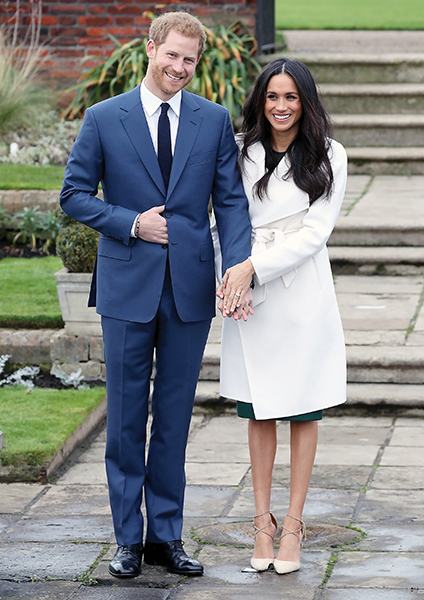The announcement of Prince Harry’s engagement to American actress Meghan Markle brought the expected “delighted” and “thrilled” from the British royal family with the Duchess of Cornwall — wife of Prince Charles, Harry’s father — particularly gracious.
“America’s loss is our gain,” she said. “She’s a star.”
But what did Her Grace mean by that? Surely, Markle has been a star on TV, playing the ambitious legal eagle Rachel Zane on USA Network’s “Suits.” But we’re just as sure that the duchess was expressing something beyond that, something that may ultimately transcend words and analysis.
What does it mean to be a star in a family or a profession? Is it all about “the old razzle dazzle,” as sharpie lawyer Billy Flynn sings in “Chicago”? Or is there something more substantive going on?

Courtesy Getty Images.
Here the actual stars offer an instructive metaphor. Just as they illuminate the night sky, people with star quality radiate — energy, warmth, charm, liveliness, inspiring leadership — what is generally thought of as charisma (from the Greek meaning “gift of grace.”) They walk into a room and the planets spin in a different direction, as Brad Pitt once said of “Interview With the Vampire” co-star Tom Cruise. It’s no surprise, then, that the fledgling motion picture industry began promoting their players as “stars” in the early 20th century, once they recognized the public’s insatiable appetite for the people behind the characters on-screen. There’s that wonderful moment in “Sunset Boulevard” — Billy Wilder’s brilliantly corrosive 1950 take on stardom — when former silent screen siren Norma Desmond (real-life silent screen siren Gloria Swanson) lashes out, “Have they forgotten what a star looks like? I’ll show them. I’ll be up there again, so help me,” her fine features and passion flooded with light from a projection booth as if she were a Byzantine icon. That’s star power, baby.
Because actual stars appear as fixed points of light, they’re also used to guide us as we chart our courses around the globe and map our destinies.
“I fell in love with Meghan so incredibly quickly,” Prince Harry said of his intended in the engagement interview with the BBC. “It was a confirmation to me that all the stars were aligned.”
But stars also align others. How often have you heard people say of someone they love that he or she is their North Star, their guiding light? Indeed, Shakespeare cast love itself, in Sonnet 116, as “an ever-fixed mark that looks on tempests and is never shaken. It is the star to every wand’ring bark, whose worth’s unknown, although his height be taken.”
Star quality, however, also has its price, for its very facets — radiance, guidance — rely on a remove.
“She shone for me like the Evening Star,” Winston Churchill once observed of his mother, the former Jennie Jerome of Brooklyn. “I loved her dearly — but at a distance.”
Perhaps it was just as well. Our closest star is the sun. And we all know what happened to Icarus when he flew too close to it. He singed his wings, crashing into the sea and drowning.
No, best sometimes to observe star quality from a just-right earthly distance, as it has a shelf life and shadow side. There are “dark stars” that give off little light and are visible only when they eclipse others and “shooting stars,” meteors that burn up when they enter the earth’s atmosphere — as anyone who has seen any of the three versions of “A Star Is Born” can attest. (Our favorite is the 1954 one with Judy Garland and James Mason, and dig that moment when Garland cuts loose with a jazz combo on “The Man That Got Away,” one of the finest five minutes in cinema history. But so powerful is this love story of stars at crossed trajectories that it’s been made into a 2018 film with Lady Gaga and Bradley Cooper.)
How many times have we seen people blaze across the scene — with every possible grace and gift — only to burn out? How many dark stars command attention by eclipsing those around them? It’s interesting that The New York Times recently headlined the sexual harassment fall of Matt Lauer, Bill O’Reilly and Charlie Rose as “The Failure of the Network News Star System.” Indeed.
Not easy, then, to be a star — or in the presence of one. Harry Chapin captured this in his haunting ballad, “Shooting Star,” about an incandescent but unstable creative artist and the woman who steadies him:
Oh, he was the sun burning bright and brittle and
She was the moon shining back his light a little
He was a shooting star
She was softer and more slowly
He could not make things possible
But, she could make them holy…
Star quality needs that counterbalance to keep everything in its proper orbit.





